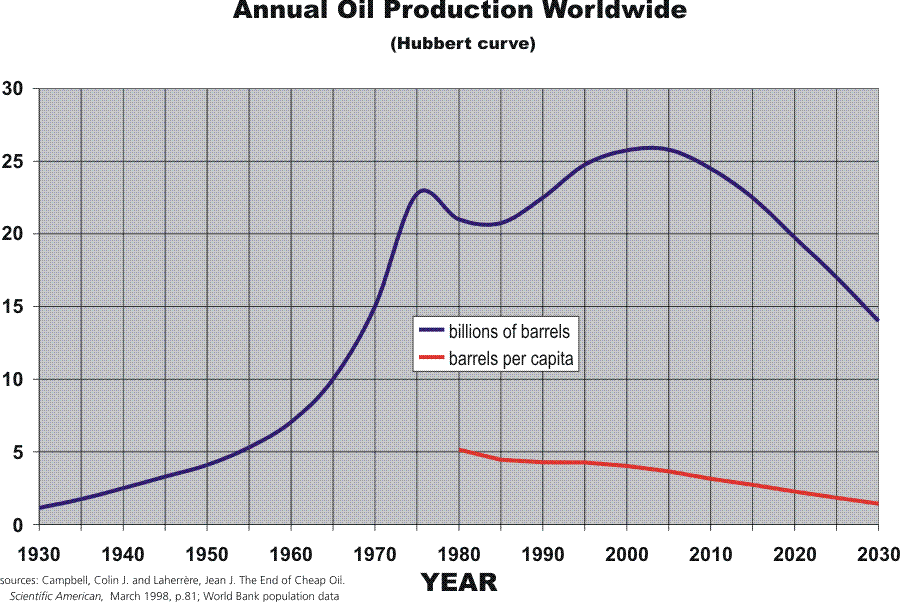Time's Awastin'!!!
Energy, telework, and the future
When we started serious, quantitative research on telework in the early 1970s one of our primary areas of investigation was on telework's energy impacts. Thirty years later it is even more apparent that telework is being underestimated as an energy survival technique. To give you a little better feel for the situation today and the foreseeable future, here's a version of the so-called Hubbert Curve, named after its geophysicist author, Dr. F. King Hubbert.
The Hubbert Curve is the result of decades of research into the world's sources and production of petroleum. It includes the explored as well as the unexplored petroleum reserves—all of them. In short, when the curve goes to zero that means there isn't any more petroleum anywhere on earth. The course of the curve up to 1990 is based on actual production of oil. The shape of the curve after that is based on certain assumptions about world demand and production capacity. If demand and/or capacity increases, the curve will fall faster than shown here. Here it is.

We have added a curve showing world oil production in annual barrels produced per human being on earth, based on population growth estimates from the World Bank. Please note that the developed world is using oil at a substantially higher per capita rate than the world average shown here. As a rule of thumb, a barrel of oil contains about 1540 kilowatt-hours of energy so, in 1980, world oil production amounted to about 7.7 megawatt-hours per capita, covering all uses of petroleum from making fertilizer to running your car. Not to point fingers but the US, with 5% of the global population, consumed just over 25% of world petroleum production in 1998.
Which brings us to the point of this piece. As per capita energy demand grows, as it always does when societies become more industrialized, and the supply of oil shrinks, we either have to find new energy sources or change our energy usage habits—or both. One of the largest uses of petroleum is transportation. One of the largest components of transportation energy use is commuter cars. Hence our early interest in telecommuting during the first fuel crises in the 1970. Telecommuting uses significantly less petroleum energy than does commuting, and will continue to do so at least until hydrogen-driven cars are ubiquitous. Our tests of telecommuting households in the US indicate that their annual energy consumption is reduced by about 4200 kilowatt-hours for each 1.5-day-per-week telecommuter. So think about the implications of the Hubbert Curve as you consider adopting, or increasing, telework. If you're an SUV owner, think even harder.
Time's awastin'!
Tweet
Telepicker
is a trademark of JALA International. All other products mentioned are registered
trademarks or trademarks of their respective companies. Search is powered by iSearch from Z-Host.
Questions or problems regarding this web site should be directed to info at jala.com.
Last modified:
Monday September 26, 2011.